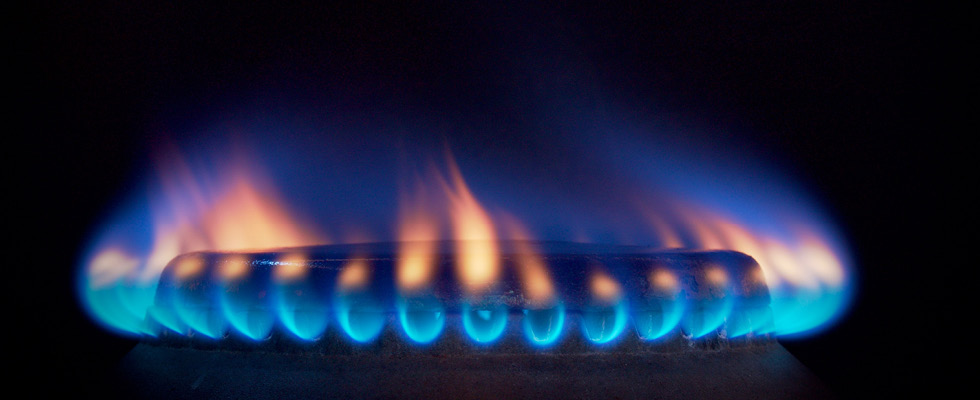
On March 28, a federal court in Pennsylvania limited the claims that a jury could consider in a residential fire lawsuit. The fire was allegedly caused by the ignition of propane that leaked from a gas cookstove. No one was home at the time, but the residence sustained significant damage. The case is Allstate v. Haier.
New Cookstove
In 2012, Duane and Sherri Koons purchased a new General Electric (GE)gas cookstove at Home Depot. The stove was converted from natural gas to propane and was installed in their home in Lebanon, Pennsylvania. Although new in 2012, the stove was actually manufactured in 2007.
The stove was manufactured by Leiser, a joint venture between General Electric and a Mexican company. In 2016, General Electric sold its entire appliance business to Haier United States Appliance Solutions. Haier continued to sell and service appliances under the name
GE Appliances.
The stove did not have pilot lights for the burners. It was electronic ignition, with push-to-turn burner control knobs. This meant that to activate a burner, the knob would be pushed in and turned to the desired setting.
Flame Rectification
The stove did not have a flame rectification system, which uses a sensor to monitor when gas being released to a burner is actually ignited and burning. If gas is flowing but there is no flame, the system activates an electronic ignitor. The Koons used the cookstove for six years without incident. That changed in June 2018 when the family left for a vacation. On June 6 or 7, Sherri cleaned the kitchen. She later said that she did not turn the stove burners on or leave them on. On June 7, the family departed.
House on Fire
On June 9, Duane received a call that the house was on fire. The family immediately returned to find extensive damage. There had been no explosion. At the scene, a firefighter told Duane that he saw at least one burner knob in the on position. Duane said this was impossible. The family, he said, had never accidentally turned a burner knob on in the six years they owned the cookstove.
The Koons had purchased property insurance from Allstate Property and Casualty Insurance. Allstate paid substantial benefits to the Koons and then conducted its own investigation of the cause of the fire. It hired two experts, Mr. Spadt and Mr. Zazula, and they reviewed the evidence at the scene. They conducted tests on the incident stove and an identical model. Both concluded the fire’s origin was at the cookstove, and that it was caused by the ignition of gas that leaked through the burners that must have been accidently turned on by Sherri Koons while cleaning. Both said the ignition source was the refrigerator motor at floor level, where they concluded the heavier-than-air propane had collected.
Lawsuit
Zazula asserted the stove was improperly designed (evidently because it lacked a flame rectification system), and was not accompanied by adequate warnings about the danger of leaving burners on.
Based on these conclusions, Allstate sued Haier and General Electric to recover the amount paid to the Koons. The defendents responded by denying that the origin of the fire was at the stove and was caused by ignition of gas leaking through the burners. The defendants filed motions to exclude the opinions of Spadt and Zazula, and for summary judgment dismissing Allstate’s claims. The trial court considered these motions and came up with a split decision.
Unqualified Expert
The court first considered the opinions of Allstate’s experts. While they did not agree that the origin of the fire was at the stove, the defendants did not challenge Spadt’s credentials to present that opinion to the jury. They did, however, argue that Spadt was unqualified to opine that the cause of the fire was ignition of a propane leak through the stove burners. The court agreed:
“Spadt, by his own admission, simply does not have ‘specialized knowledge’ about the core instruments of his fire causation theory — LP gas, gas stoves and refrigerators. Accordingly, Spadt is not qualified to offer his second conclusion to the finder of fact.”
Defendants did not attack Zazula’s qualifications to provide an opinion on the cause of the fire, but they did argue his methodology was flawed. Zazula had conducted tests on the stove, as well as on an identical model. The defendants attacked these tests. Zazula did not test whether a refrigerator motor at floor level could ignite leaking gas from the burners. He also did not consider outside variables (such as air exchange and air currents in the house) that would relate to the movement and accumulation of gas. He also did not explain why there was no evidence of an explosion.
Fitting the Facts
Defendants also pointed to the denials by the Koons that Sherri could have accidentally turned one or more of the burners on. The court was unpersuaded:
“Whether the fire at the Koons’ home was caused by the accidental discharge of LP gas from the Koons’ stove is an open question. Defendants may yet prove at trial that Zazula’s theory of causation is entirely mistaken. But as it stands, Zazula’s opinion fits the facts of the case. We will deny defendants’ motion as to Zazula’s opinion on causation.”
The court, however, found that Zazula was not qualified to provide opinions on improper stove design to a jury.
‘Mechanically Possible’
When it turned to the defendants’ motion for summary judgment, the court found that Allstate could present its improper design claims to the jury. Testing after the incident on an identical stove “show that accidental manipulation of the burners without triggering the ignitor is mechanically possible.” And while the Koons’ denials that they could have left burner control knobs on “leans against Allstate’s theory of causation,” those denials are “not conclusive.” This was enough to allow the jury to consider Allstate’s negligent design claim, even without Zazula’s testimony.
For the failure to warn claim, the court focused on causation — would different consumer warnings for the stove have prevented the incident?
Unread Instructions
Duane testified he never read the stove instructions, and in fact doubted a manual even came with it. Sherri said she saw a manual and read some parts of it, but could only remember the part relating to the stove’s computer motherboard, not the burner knobs. And Allstate’s theory rested on the accidental manipulation of the burner knobs by Sherri when she was not paying attention to her conduct. This was enough for the court to dismiss the warning claim:
“Allstate insists a warning would have made a difference but offers no theory as to how a different or additional warning could have prevented the fire. Without even a theory of causation, we must find Allstate’s contention that a different warning could have prevented the fire at the Koons’ home to be mere speculation.”
Finally, the court held that Allstate’s claim for breach of warranty on the stove must be dismissed because it was not filed within four years of purchase.
In summary, the court did allow Allstate’s claim to go to trial, but with limitations: (1) Spadt’s opinion that the fire originated at the stove could be presented to the jury; (2) Zazula’s — but not Spadt’s — opinion that the fire was caused by the refrigerator motor igniting gas that leaked from the stove’s burners could also be presented to the jury; (3) Allstate could argue that the stove was improperly designed, but could not present Zazula’s opinion to that effect; and (4) the warning and breach of warranty claims were dismissed.


